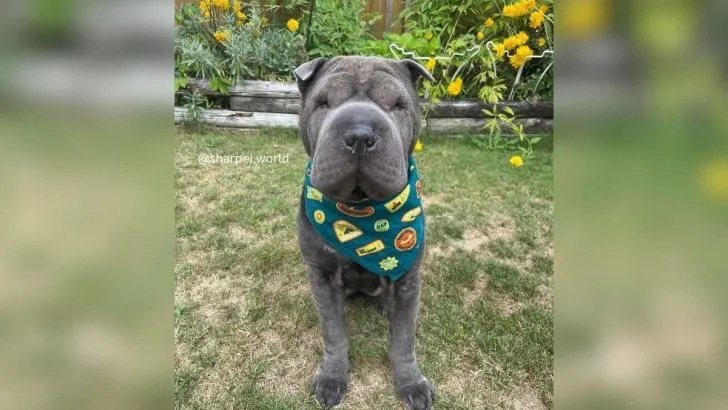Miniature versions of popular dog breeds have long captured the hearts of pet enthusiasts worldwide.
The allure of a pint-sized companion, embodying all the characteristics of a beloved breed in a more manageable, adorable package, is undeniable.
From teacup Chihuahuas to mini Dachshunds, the fascination with these diminutive dogs continues to grow.
Among these coveted tiny breeds, the Miniature Shar Pei stands out, seemingly offering the distinct features of the traditional Shar Pei in a more compact form.
But as enchanting as the idea of a Miniature Shar Pei might be, it raises a crucial question: do these dogs truly exist as a purebred breed?
The emergence of a supposed “miniature” version of the Shar Pei has sparked considerable debate among breeders, veterinarians, and canine enthusiasts.
Are these miniature marvels a legitimate offshoot of the revered Shar Pei, or are they a clever, albeit controversial, creation designed to meet the high demand for smaller dogs?
Join us as we separate fact from fiction, offering a critical perspective on the existence and ethical considerations surrounding the Miniature Shar Pei dog breed.
Does The Miniature Shar Pei Dog Exist?
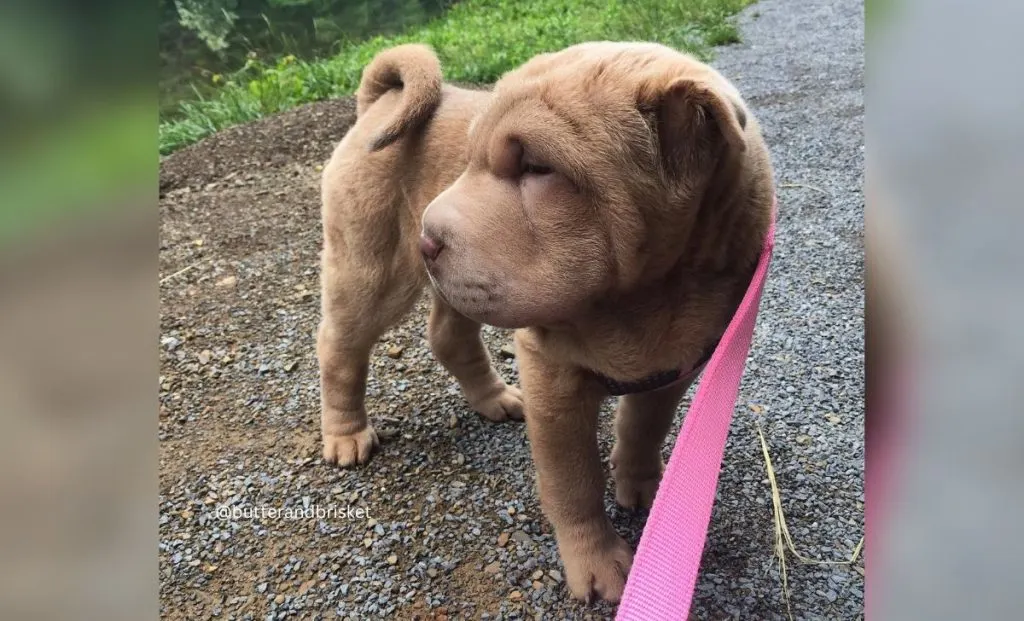
You saw an adorable and funny Shar Pei puppy, and you googled to see if they exist in the cute mini or teacup type? Sorry to burst your bubble, but these pups that form close bonds with their owners only come in one size – the standard one.
A worrying trend has taken hold in the dog breeding world in recent years: the rise of the so-called “Miniature Shar Pei.” Despite what some breeders claim, no recognized breed exists.
The notion of a “Miniature Shar Pei” has no fundamental basis. Official breed standards, such as those set by the American Kennel Club (AKC) and other major canine organizations, do not recognize a smaller version of the Shar Pei breed.
Such puppies being marketed under this label are, in fact, crossbreeds, typically created by mixing Shar Peis with smaller breeds like Pugs, French Bulldogs, Bull Terriers, or Boston Terriers.
This false narrative has been perpetuated by unethical backyard breeders who produce mixed breeds and market them under this faked name as their best option for quick and easy profit.
The backyard breeders also love to add that a few easy training sessions and a few daily walks are enough for this pup to become an exemplary part of the everyday dog and human society.
However, if you have ever dealt with a Shar Pei who has a considerable need for exercise and lengthy training, you will know there is no way for these things to be true.
The advertised dogs are inaccurately described and often suffer from significant health and behavioral issues due to poor breeding practices.
Understanding The True Shar Pei

The history of the Shar-Pei dog breed can be outlined as far back as the Han Dynasty (200 CE), with dogs with set ears and large lips looking a lot like Shar-Peis being found on pottery dating over 2000 years.
Due to the shared demographics, geography, and physical similarities like coat length, a high set tail, and wide muzzles, the Shar-Pei are believed to share common ancestors with Chow Chow and Mastiffs.
The ancestors of the modern-day Shar-Pei dogs were originally hunting breeds used for hunting and herding, in the cruel sport of canine fighting, also as excellent sentry dogs, and even as a food source.
Shar Pei Types
Because they weren’t technically a breed until recently, several kinds of these pups were created throughout China.
In southern China, these dogs were an athletic breed that was short-coated, muscular, and had a clean bite with large heads.
In northern China, the winters were very long and quite cold in the small villages, so these pups had thicker coats and were generally larger.
The breed was nearly lost in its native motherland of China during the Communist Revolution, and their digits dramatically declined.
However, the breed’s plight was spotlighted when discussed in Dogs magazine issues during the 1970s.
From there, approximately 200 Chinese Shar-Pei dogs were imported to the United States, and the American variety was developed.
Today, there are two recognized varieties of Shar Pei: the Traditional, or so-called Eastern, or even the Bone-Mouth Shar-Peis, still found in aboriginal China, and the Western or so-called Meat-Mouth Shar-Pei dogs.
The Traditional Shar Pei
The Traditional Shar Pei, often referred to as the “Bone Mouth” Shar Pei, closely resembles the ancient dogs of China. These dogs are leaner and have fewer exaggerated wrinkles compared to their modern counterparts.
Their build is more athletic, with a narrower face and a mouth structure that lacks the heavy, fleshy folds seen in the Modern Shar Pei.
Historically, the Traditional Shar Pei was bred for practical purposes such as hunting and guarding.
Their loose skin and rough coats served as protection in fights against wild boars and other animals. This utilitarian approach to breeding prioritized functionality over appearance.
The Traditional Shar Pei’s relatively sparse wrinkles and tighter skin helped them perform their roles more effectively.
The Western Shar Pei
In contrast, the Modern or the Western Shar Pei, also known as the “Meat Mouth” Shar Pei, is characterized by its deep wrinkles, broader face, and heavier build.
This type emerged primarily in the latter half of the 20th century when the breed was introduced to the Western world, particularly the United States.
American breeders, captivated by the Shar Pei’s unique features, selectively bred these dogs to enhance their distinctive wrinkles and robust appearance.
This breeding focus shifted from the breed’s original functional traits to a more exaggerated aesthetic appeal. The result is a dog that is instantly recognizable but quite different from its ancestral form.
The deep folds of skin, while visually striking, can lead to health issues such as skin infections and eye problems due to excessive wrinkling.
The Rise of the Miniature Shar Pei Myth
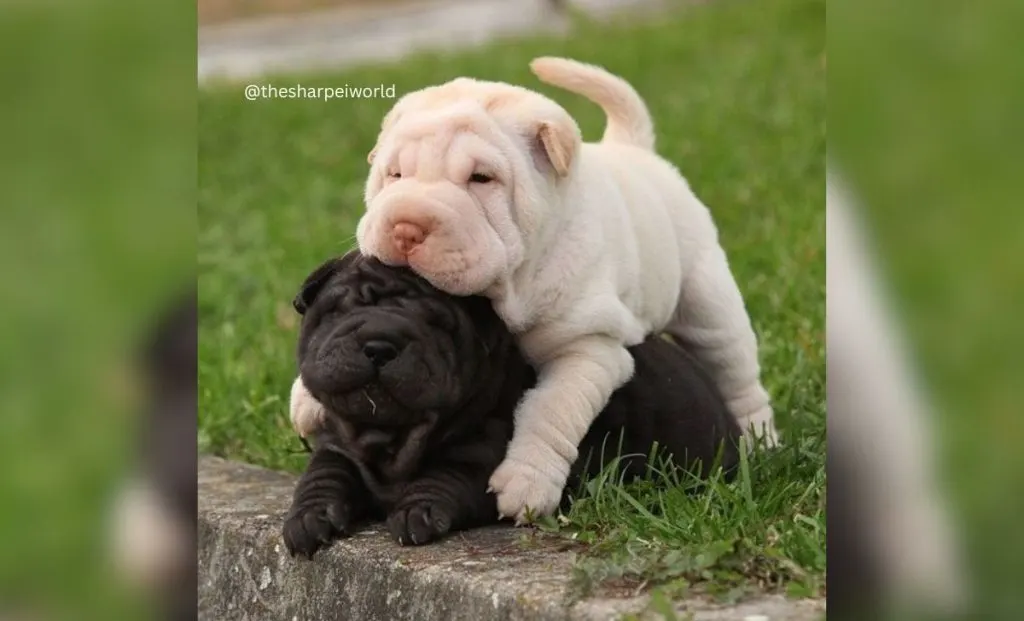
The demand for smaller dog breeds has surged in recent years, driven by urban living (where smaller pets are more practical) and the appeal of designer dogs like the Cane Corso German Shepherd mix for example.
Backyard breeders, seeing a lucrative opportunity, have exploited this trend by creating and marketing the Miniature Shar Pei.
These breeders often use deceptive practices to convince potential buyers that they are purchasing a rare and unique breed that does well in the show ring.
One of the primary tactics used is the manipulation of marketing materials.
Pictures of puppies are carefully curated, and descriptions are crafted to highlight desirable traits while downplaying or outright omitting the dogs’ true lineage and potential health issues.
Terms like “teacup,” “mini,” and “micro” are commonly used to appeal to prospective buyers despite the lack of any official recognition or standard for these variations.
What Are The Consequences Of Owning A Mini Pei
The most significant concern with these mixed-breed dogs is their health.
Responsible breeding practices involve thorough health screening, genetic testing, and adherence to breed standards to ensure the well-being of the dogs.
In contrast, backyard breeders often disregard these essential practices, leading to health problems in their puppies.
Shar Peis are already predisposed to several genetic health problems, including hip dysplasia, entropion (a condition where the eyelids roll inward), and various skin problems due to their characteristic loose skin.
When Shar Peis are crossbred with other breeds without proper genetic screening, these issues can be exacerbated, or new health problems can arise.
The resulting puppies often suffer from a combination of genetic disorders from both parent breeds, leading to a lifetime of medical issues and suffering.
Moreover, the lack of proper veterinary care in backyard breeding operations means many puppies are not vaccinated, dewormed, or given necessary medical attention.
This neglect can lead to the spread of infectious diseases, parasites, and other health complications that further compromise the well-being of these dogs.
Behavioral Challenges Of The Mini Pei
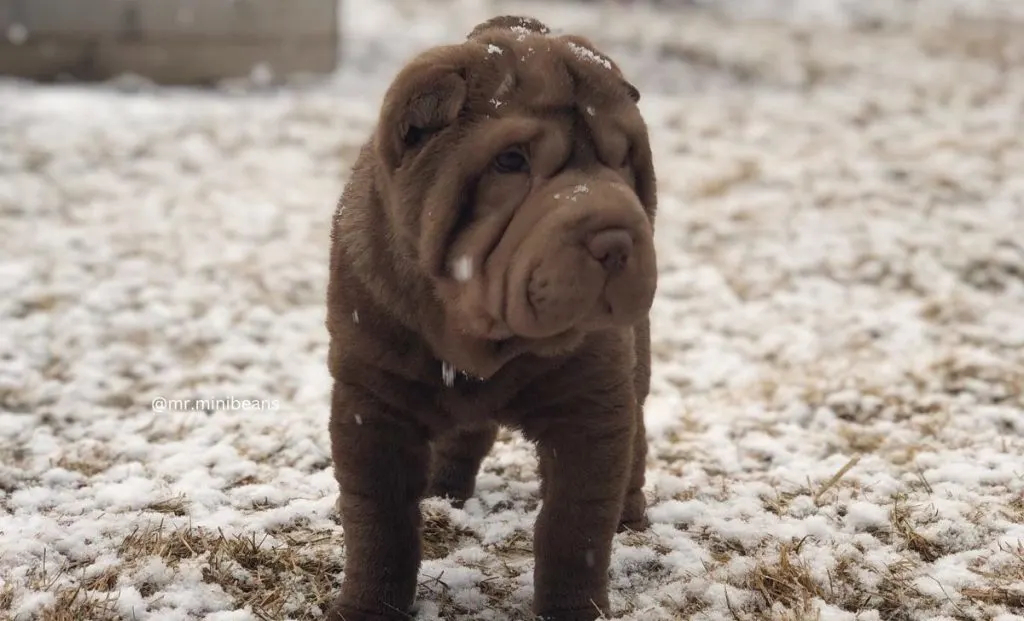
In addition to health concerns, behavioral issues are prevalent among dogs bred by backyard breeders. Early socialization is vital for pups to develop into well-adjusted, confident dogs.
Reputable breeders ensure that puppies are exposed to various stimuli during critical developmental periods, including different people, environments, and other animals.
However, puppies from backyard breeders often grow up in poor conditions, with minimal human interaction and inadequate socialization.
This lack of early positive experiences can lead to significant behavioral problems, such as fearfulness, aggression, and anxiety.
Families who adopt these puppies may deal with unexpected and challenging behaviors that require extensive training and rehabilitation.
The Ethical Implications Of Owning A Mini Pei
The practices of backyard breeders extend beyond poor health and behavioral outcomes; they also raise serious ethical concerns.
These breeders prioritize profit over the welfare of the animals, often keeping dogs in substandard living conditions.
Breeding dogs are frequently kept in small, cramped spaces with little regard for their physical and emotional needs. The well-being of the breeding dogs is frequently totally neglected, leading to suffering and a poor quality of life.
Let’s not forget the deceptive marketing practices these breeders use to mislead prospective buyers.
Families who believe they are purchasing a healthy, purebred Miniature Shar Pei often find themselves with a dog that requires extensive veterinary care and behavioral support.
This deceit causes emotional and financial strain for the owners and contributes to higher abandonment rates and rehoming.
Combating The Problem: What Can Be Done?
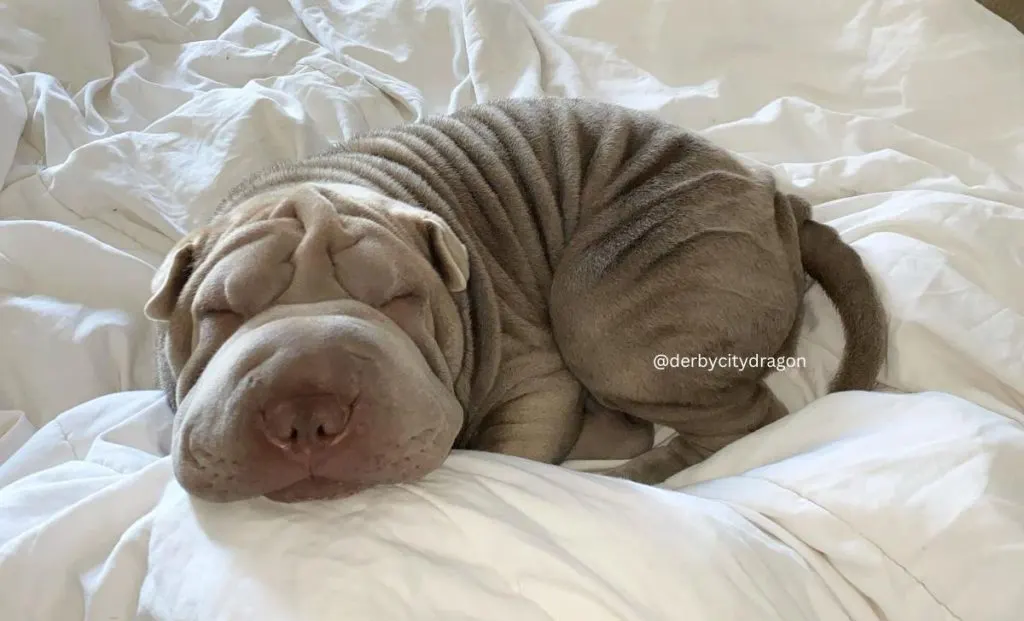
Addressing the issue of unethical backyard breeders and the myth of the Miniature Shar Pei requires a complex approach.
One of the first steps is education and awareness. Raising awareness about the realities of backyard breeding and the non-existence of the Miniature Shar Pei and similar breeds is crucial.
Potential dog owners should be informed about the importance of adopting from reputable breeders or rescue organizations.
Public education campaigns can help people recognize the red flags of unethical breeding practices, ensuring they make informed decisions when selecting a new pet.
Promoting responsible breeding is another essential strategy. Supporting and promoting responsible breeders who adhere to strict ethical and health standards can make a significant difference.
Legislation and regulation are also integral in combating unethical breeding practices. Stronger regulations and enforcement are needed to crack down on these practices.
Laws should mandate proper breeding standards, regular inspections of breeding facilities, and penalties for those who engage in deceptive and harmful practices.
Better animal welfare laws can help protect dogs from exploitation, ensuring that all breeding operations adhere to humane standards. However, veterinary advocacy is equally important.
Veterinarians are crucial in educating pet owners and advocating for animal welfare.
Veterinary professionals can help raise awareness about the issues associated with backyard breeding and provide guidance on responsible pet ownership.
By working with veterinarians, we can ensure pet owners receive accurate information and support in caring for their pets, discouraging unethical breeding practices.
How To Identify Reputable And Ethical Breeders
Those looking to add a Shar Pei or any other breed to their family must know how to identify reputable breeders. One of the first steps in this process is thorough research.
Prospective dog owners should take the time to investigate breeders, looking specifically for those who are members of recognized breed clubs and have a positive reputation within the dog breeding community.
This background check can often be conducted online through breeder directories and dog enthusiast forums.
Visiting the breeder in person is another important step. Reputable breeders will welcome potential buyers to their facilities, allowing them to see the dogs’ living conditions firsthand.
This visit delivers a chance to meet the breeding dogs, observe the environment where the puppies are raised, and ensure that the animals are kept clean, healthy, and humane.
Seeing the breeder’s operation up close can help prospective owners feel more confident in their choice.
Asking questions is also an essential part of the process. Responsible and ethical breeders will always be open and transparent about their breeding programs and practices, health testing protocols, and the overall care provided to their dogs.
Potential buyers should inquire about genetic testing, vaccination schedules, and early socialization efforts. A reputable breeder will have clear and comprehensive answers, demonstrating their commitment to the health and well-being of their animals.
These breeders often provide health guarantees for their puppies, accompanied by health screenings and vaccination documentation.
They will be transparent about potential health issues within the breed and offer assurances that the puppies are free from genetic disorders and other health concerns.
This level of transparency is crucial for ensuring that new pet owners are fully informed about their future pet’s health prospects.
To Sum It All Up
The myth of the Miniature Shar Pei is a clear example of how unethical breeding practices can harm dogs and their owners.
Backyard breeders, driven by profit and exploiting popular trends, produce mixed-breed dogs that often suffer from severe health and behavioral issues.
These practices deceive prospective buyers and contribute to the broader animal welfare issue.
By raising awareness, promoting responsible breeding, supporting rescue organizations, and advocating for stronger regulations, we can help combat the unethical practices of backyard breeders.
Possible dog parents must be educated about the importance of choosing reputable breeders or adopting from shelters, ensuring that all dogs have the opportunity to live healthy, happy lives.
In the end, the welfare of our canine companions should always be the top priority.
By making informed decisions and supporting ethical breeding practices, we can protect the well-being of dogs and foster a culture of accountable pet ownership.
Let us strive to ensure that every dog, regardless of its breed, is treated with kind words and the care and respect it deserves.
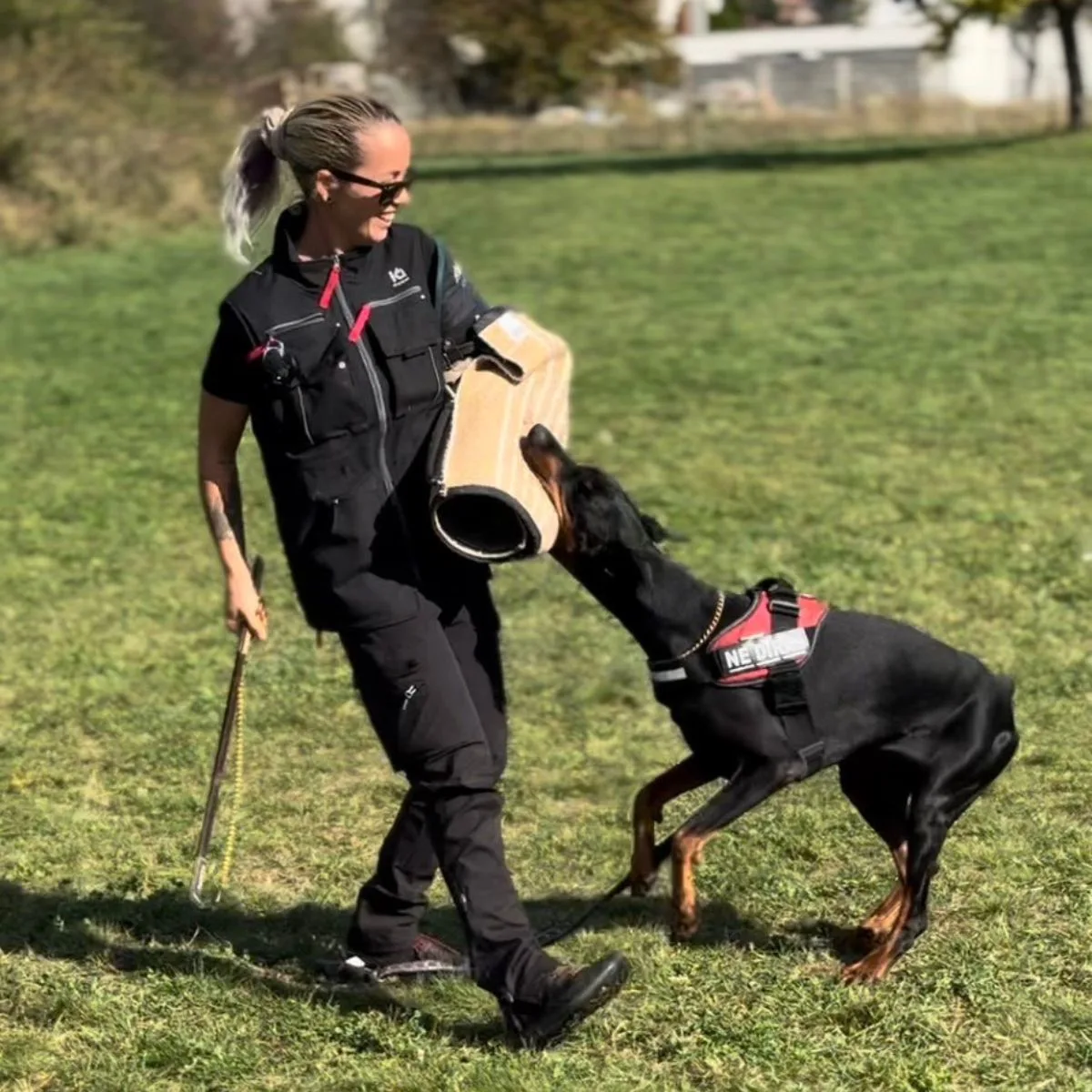
Nandina has been a lifelong dog owner and enthusiast. She shared her home with multiple breeds, including Giant Schnauzers, Cane Corsos, and Huskies. Currently, she is raising a three-year-old rescue and a working-line German Shepherd puppy.
Actively engaged in IGP dog sports for two years, Nandina is a certified instructor for basic obedience and socialization. She works as a trainer in her local dog sports club, and in her spare time, she handicrafts biothane gear for dogs.
